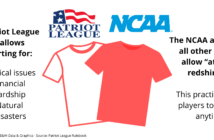Founded at the start of the pandemic, Lehigh Valley bakery Breadfermented prides itself on its easily digestible and delicious sourdough. The store’s staple is yeast-free sourdough, with all gluten broken down during a 36 hour fermentation process. Customers are eager to get their hands on the savory bread, so much so that pastry chef Ida Bromfield said she can’t seem to bake enough.
Yet while its unique product has made the storefront popular in the Bethlehem area, the concept of a “sourdough bakery” was not solely taste-driven, nor was it motivated by easy digestion.
Bromfield said the transition was prompted by her inability to find or purchase yeast. Unlike other breads, sourdough does not need yeast to rise.
Bromfield is still struggling to find certain ingredients in stores. She has been having difficulty buying almonds and almond paste for three months and is facing challenges purchasing heavy cream. Bromfield now uses sour cream instead.
“I do have to find substitutes, which I don’t like doing because I don’t really know how the product is going to turn out,” Bromfield said.
Bromfield is just one of many vendors in the Lehigh Valley struggling to access certain foods amid the pandemic. Supply chain issues, namely staffing shortages and a lack of product, are impacting individual customers, small businesses like Breadfermented and wide-scale vendors.
According to the Bureau of Labor Statistics, 4.3 million U.S. workers have left their jobs since the start of the pandemic. These staffing issues have been especially prominent among delivery drivers and warehouse workers, leading to a ripple effect of national delays and supply shortages.
Richard Galanti, the executive vice president and chief financial officer at Costco, said the supply chain is impacted by a variety of factors, including port delays, container shortages, COVID-19 disruptions and shortages of various raw materials and ingredients. He said the pandemic has made importing goods especially challenging.
In many countries, Galanti said that if a single employee in a manufacturing facility contracts COVID-19, the entire plant may shut down for a week.
“If that manufacturing facility located at or near a given port doesn’t have its products produced, put on containers and ready to be taken by the ocean-going ship, the ship just passes that port – or that vendor or that supplier – and waits until next month,” Galanti said.
One ill employee is therefore capable of delaying the whole supply chain for a given item.
Galanti said delays and shortages have caused traditional roll out times to go from between eight and 12 weeks to between 16 and 18 weeks.
Companies like Costco and Giant have addressed these issues by limiting the amount of certain goods customers can purchase at one time, from toilet paper to water bottles. Even so, Galanti acknowledged that announcing these limitations can make people even more frantic.
“When retailers out there mention there’s a shortage on something, it just exacerbates (the issue),” Galanti said. “Everybody comes in and buys more. That creates a bigger problem.”
Zach Zacharia, Lehigh University’s associate professor of supply management and director of supply chain research, agreed with Galanti that declaring goods as being “of limited supply” only encourages hoarding.
Zacharia said the Lehigh Valley has been hit especially hard with labor shortages, specifically its manufacturing and distribution centers.
“Lehigh is kind of unique in that we are home to a lot of distribution centers, because somewhere between 20-30 percent of all the U.S. population is within a 10 hour truck drive from the Lehigh Valley,” Zacharia said.
He said some of this labor shortage stems directly from many women leaving the workforce to take care of their children.
Inaccessibility to quality daycare and COVID-19-induced school closures led many mothers to stay home during the pandemic. Zacharia said that losing these crucial members of the workforce, in addition to their productivity, has had negative effects on the supply chain.
“People forget what an important role women play in the workforce, and women are getting disproportionately affected by the lack of good quality childcare,” Zacharia said.
Understaffing has caused issues not only for commercial vendors, but for schools, as well.
Susan Bahnick, Northern Lehigh’s food service director, described the trickle-down effect.
She said issues start with understaffed manufacturers, followed by a shortage of vendors. With not enough personnel available to maintain stock and unload trucks, Bahnick said shipments of the food and equipment needed to provide daily school lunches have been severely delayed.
In addition to delays, price increases are also a concern.
Lori Seier, Parkland’s food service director, said that prior to the pandemic, schools fell into a “not for profit” pricing category. Unlike restaurants, which are less consistent, this category offered vendors a more predictable flow of demand.
Seier said this category no longer exists.
“We are now moving into that restaurant type pricing where I think our costs will now be higher,” Seier said. “And I don’t see them going down.”
Bahnick added that these price increases hit school districts especially hard, as they are buying food in bulk. While the 8-cent-per-pound expected price increase of McCain french fries may not impact the average customer, Bahnick said the effect is magnified when feeding thousands.
“I’m not buying a pound like you and me,” Bahnick said. “We’re talking 30 pounds, 60 pounds, that sort of thing.”
Sally Harris, a senior distribution supply representative at Singer Equipment, has experienced inflation from the vendor side, as well.
Harris sells equipment and disposables to a variety of accounts, from K-12 schools to multi-chain restaurants. She works closely with the Le-Nor-Co bid, a consortium of schools who buy products together for increased purchasing power.
While Harris is used to being notified of price increases on a monthly basis, she said the pandemic has made these changes weekly.
Disposable gloves, a food service essential, became a pandemic necessity in 2020. Healthcare workers were wearing a new pair when dealing with each patient, and average customers were wearing them to grocery stores.
With such high demand for PPE, the price of disposable gloves increased more than 400 percent.
“I remember I used to sell powder-free vinyl gloves on the Le-Nor-Co bid for $18.20 a case, that’s $1.82 a box,” Harris said. “They were selling as much as $9 a box.”
Though the supply and demand for disposable gloves have since caught up with each other, Harris has seen price increases in all categories, from reusable equipment to plastic disposable utensils.
“I hope things turn around in 2021, but I’m not really optimistic at this point,” Harris said. “I think we’re going to continue to have some challenges.”






Comment policy
Comments posted to The Brown and White website are reviewed by a moderator before being approved. Incendiary speech or harassing language, including comments targeted at individuals, may be deemed unacceptable and not published. Spam and other soliciting will also be declined.
The Brown and White also reserves the right to not publish entirely anonymous comments.